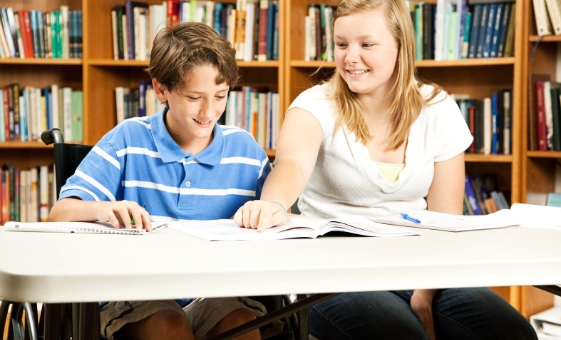Role of the Educational Assistant
As an educational assistant (teaching assistant) you have a special role. You are usually the person who spends the most time with a student during the school day. You are also likely one of the more consistent presences in their school experience. You are the person who is present most often when other peers are around. You have the chance to encourage relationships more than any other educator.

The Experience of an Educational Assistant
As an EA, I am sometimes the link between the teacher and the student. I help the student feel comfortable, show them that they can trust me, and help them understand that I will not judge them. I intentionally try to learn about my students’ interests or hobbies–art, sports, music. With each response I am able to understand the student better and learn which way to teach them–visually, auditorily or kinaesthetically. Through working as an EA I have learned patience, how to set boundaries, and the ability to work through challenges that have come between a student and his or her learning.
EA, ON
Things you can do to encourage friendships with peers:
Be welcoming: don’t be a barrier between your student and their classmates.
Be a facilitator: help along initial interactions between your student and their classmates. Help other youth understand differences that might make them uncomfortable.
Be a model for the other students of how to speak to and interact with the student you are assisting. Allow them to help you where appropriate. For example, maybe the other student can push the wheelchair or hold the cup while your student drinks.
Allow positive interactions to occur as much as possible without your involvement.
Things you can do to encourage positive relationships between your student and other educators:
Help other educators to understand your student’s disability and what they need to be comfortable and able to interact or be present well.
Encourage direct contact between other educators and your student. Indicate through your own behaviour how they should act and how your student can contribute.
Provide insight into your student’s strengths, needs and interests.
Help your students emotionally, physically and academically. Allow them the freedom to do things they have never done before while overseeing this and ensuring their safety. They need to be given the independence to try things and yes, sometimes fail.
Nicole, Educational Assistant, ON

Resolving the Mystery
Encourage chatting in classes: Give a brief explanation of the special ed student’s abilities and how the class can help them meet their goals of socializing and learning social behaviour. Students in the class usually feel a purpose when the mystery of the “odd” child is cleared up and they know it is okay for them to greet our student each day and that they are empowered to assist in their development by expecting a response and so forth.
Gail, Educational Assistant, BC
This piece by Dr. Ashleigh Molloy, Director of the Transformed Education Institute, lists important practices of educational assistants–practices that will help provide an improved student learning experience.
This American organization provides some helpful resources for EAs, including discussion of the type of teamwork that should be fundamental between teachers and EAs.


